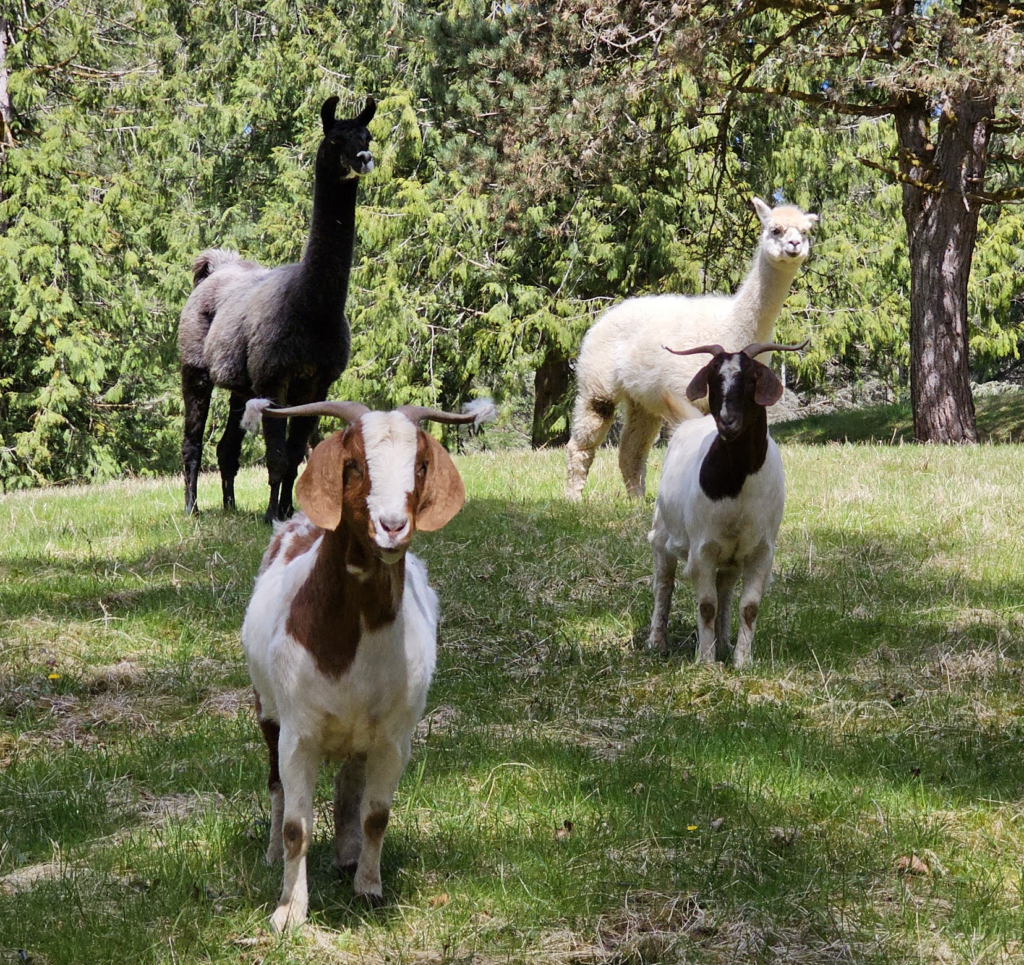Llamas & Alpacas: Natural Livestock Guardians
When it comes to protecting your livestock, traditional guardian animals like dogs and donkeys aren’t the only options. Llamas—and in some cases, alpacas—offer a natural, low-maintenance solution for keeping your herd safe.

Why Choose a Llama as a Livestock Guardian?
Llamas are instinctively territorial and have a natural aversion to canines, making them excellent at deterring predators like coyotes, foxes, and stray dogs. They bond well with livestock, particularly sheep and goats, and require little training to step into a protective role.
Key Benefits of a Guardian Llama:
- Strong Protective Instincts – Llamas are naturally alert and will charge, kick, or stomp at perceived threats.
- Low-Maintenance – Unlike livestock guardian dogs, llamas don’t require special training or socialization with people.
- Easy & Cost-Effective Feeding – Unlike dogs, which require specialty feed, or donkeys, which may need supplemental grain, llamas thrive on the same hay and pasture as your livestock. This makes their upkeep much simpler and more affordable.
- Long Lifespan & Cost Savings – With proper care, llamas can protect livestock for 15–20 years with minimal upkeep compared to a working dog.
- Integrated with the Herd – Llamas tend to bond with their flock, reducing stress among livestock and improving pasture management.
Can Alpacas Be Livestock Guardians?
While alpacas share some protective instincts, they are generally smaller and more timid than llamas. They may help alert livestock to threats, but they are less likely to confront a predator. However, in lower-risk environments, a well-bonded alpaca can provide some level of deterrence and herd cohesion.
Choosing the Right Guardian Llama
For the best results, a gelded male llama (castrated) is ideal as a guardian. Multiple llamas may bond with each other instead of the herd, reducing their protective instincts. Females can also be effective but may not be as aggressive toward predators.
Integrating a Guardian Llama into Your Herd
Quarantine & Observation – Allow the llama time to adjust to its new environment before introducing it to livestock.
Gradual Introduction – Start with a small, enclosed space where the llama can interact safely with the herd.
Monitor Behavior – Ensure the llama bonds with the livestock and does not display aggression toward them.
Routine Health Care – Like all livestock, llamas need regular vaccinations, hoof trimming, and occasional shearing.
Finding a Guardian Camelid
Choosing the right guardian llama or alpaca starts with finding a reputable breeder or auction. Visit our dedicated page featuring trusted camelid farms and auctions in the area. These resources will connect you with knowledgeable breeders who can assist you in selecting the perfect guardian animal suited to your livestock and environmental needs.
A Sustainable & Effective Livestock Protection Solution
Llamas offer a natural, low-input alternative for livestock protection. With their strong guarding instincts, ease of care, and cost-effective feeding, they make an excellent choice for farmers and homesteaders looking for a reliable guardian animal.
